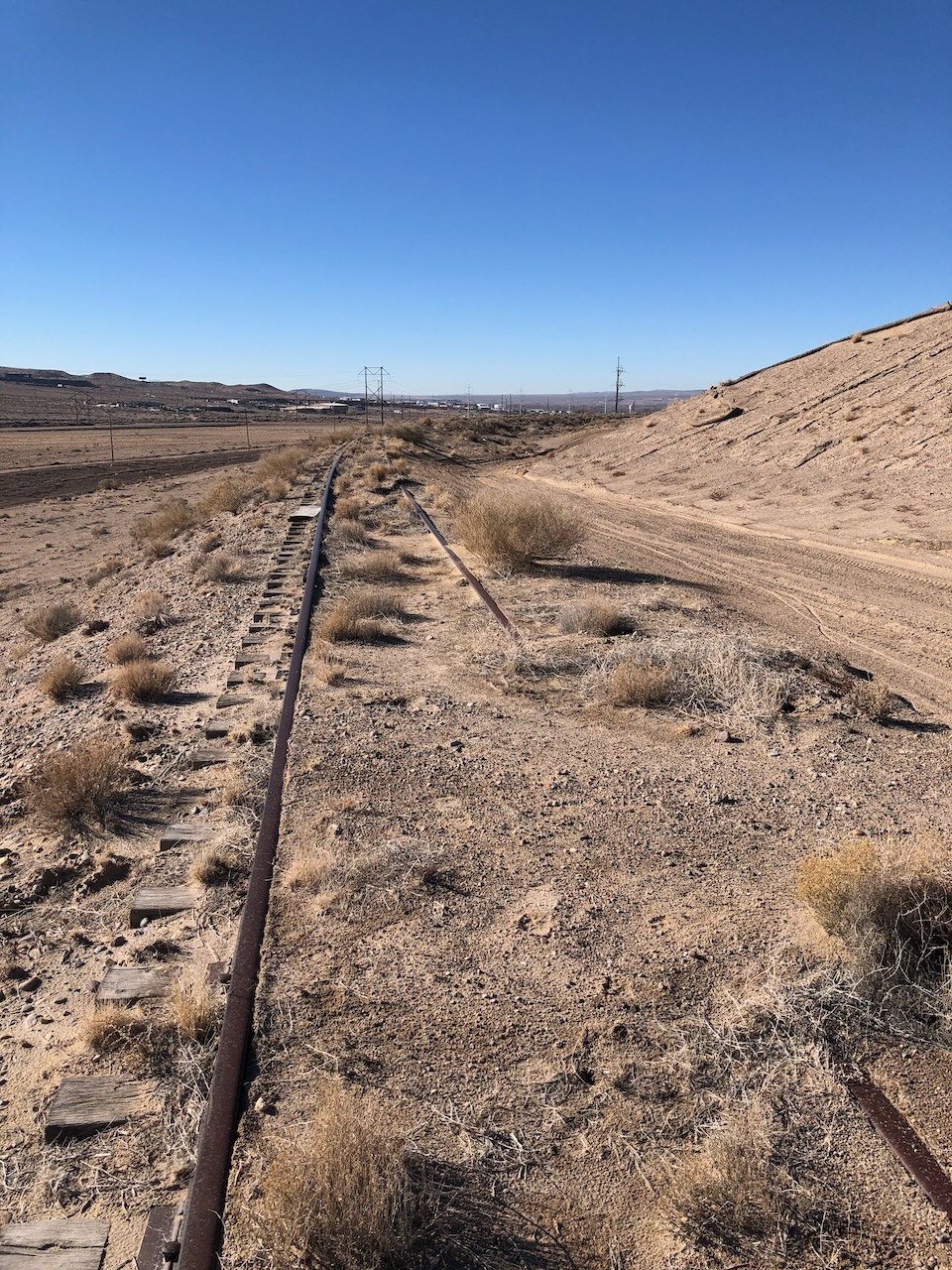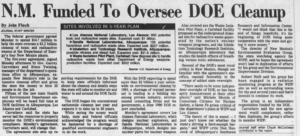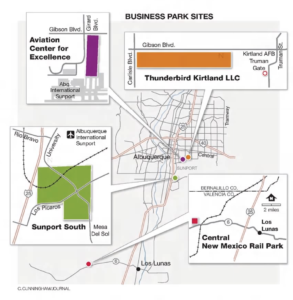
Abandoned tracks from the nuclear weapons-bearing “White Trains,” which weren’t always white. On edge of Tijeras Arroyo, south of Kirtland Air Force Base, outside Albuquerque, New Mexico. John Fleck, December 2023
Out on my bike exploring this morning, I climbed a hill to find these old abandoned railroad tracks built for what they called the “White Trains,” which carried nuclear weapons to and from Kirtland Air Force Base outside Albuquerque, New Mexico.
It wasn’t a surprise. I knew roughly where they were, having stumbled on a section of abandoned tracks on a bike exploring expedition with a couple of friends a few years back and sorted through the “Why are these train tracks here?” question. This part of the arroyo is popular with the dirt biking/ATV crowd, and when you get near the road the trash dumpers, but there’s not much other human activity out here any more. The embankment to the right is a huge pad graded for a business park that never (has not yet?) happened. As I said, not much human activity out here any more.
It’s not great bike riding – sandy, a lot of walk-a-bike – but I was exploring and in no hurry. The ATV folks have created some nice paths that helped my navigation, and it being a weekday, there weren’t any actual ATVs in sight, just one big-ass street pickup, one of those slightly lifted 4-door jobs, poking its way through the sandhills going as slowly as I was.
The White Trains
The White Trains had been retired by the time I moved to Albuquerque to start writing about nuclear weapons in 1990, replaced by anonymous truck transports that looked like regular big rigs if you didn’t notice the armored SUVs escorting them. From the 1950s until the late 1980s, the Department of Energy had used the White Trains to ferry nukes from the Pantex Plant outside Amarillo, where they were assembled, to Kirtland – and I think maybe elsewhere in the country too.
Kirtland is home to what I think (it’s classified!) is the largest military nuclear weapons depot in the United States, the Kirtland Underground Munitions Storage Complex. Kirtland’s vast barbed wire enclosure also includes Sandia National Laboratories, where we design a significant portion of the nukes’ innards.
This was a huge part of my life. For nearly a quarter century, nukes were my beat. A search on “John Fleck” and “nuclear” in the Albuquerque Journal archives gets 1,563 hits. I have a deep history with the topic. That’s why ever since we found the “White Train” tracks on one of our crazy bike exploring outings, I’ve had a pin in my mental map out there.
The White Trains became a focus of protest by the 1980s, and the nukers cleverly tried painting them different colors, but the protests continued and people continued calling them “White Trains”. Given the end points of the trip – Pantex and Kirtland – it was pretty obvious that they weren’t carrying household goods.
I’ve been exploring these landscapes around the edges of the city lately, working on a piece about them – places not designated “park” or “wilderness”, just culturally orphaned open spaces repurposed for off-roading and dumping trash. They’re rich desert ecosystems, but the human detritus makes them a little spooky. The abandoned White Train tracks upped the spooky meter to 11.
Sunport South Business Park
The land where the abandoned tracks run is part of the “Sunport South Business Park”, “strategically located where road, rail and air meet,” as the Albuquerque Journal explained in a 2017 story announcing the project. The “rail,” actually shown in the Journal graphic, is the old “White Train,” line which, judging from the picture above, needs a bit of refurbishment. Road access from a street to the east is better, and it’s right next to the airport, so sorta strategic?
Looking back at my old bike rides (I’m one of those crazy people who GPS ’em all.), I realize that the bike ride during which we found the “White Train” tracks was the day after the newspaper story announcing “Sunport South.” You have to ride your bike somewhere. “Let’s go see where they’re gonna put that new business park!” It was a pretty memorable ride, involving a drag strip and a trespassing incident that I’ll have to tell you about over beers some time.
Six years later, Sunport South remains a feature on my “much-hyped business parks that don’t actually have any business” bicycle exploring tour. The “Aviation Center for Excellence,” built on a stretch of abandoned runway on the far side of the airport, is also on the tour, given that the only thing built on the site nine years after the project was announced are a bunch of streets that make it easy to get near the airport to watch the planes take off and land.
These things take time, and I’m patient. I’m in Albuquerque for the long haul. Maybe the “White Trains” history could be a marketing tool.




Not sure my comment went through: I was surprised your article made no mention of Manzano Base which is where the nuke stockpile actually is. Stupid to put so many in on place. But you can easily see it on Googleearth.com at 35 de 00′ 49.95″ lat. and -106 de 28′ 53.49 and around that point. Everyone in a while someone breaches the security rings around the base and all hell breaks loose and it make it into the newspapers.